HOW CRM AND MARKETING AUTOMATION BRIDGES MARKETING AND SALES FOR MORTGAGE LENDERS
Why do mortgage lenders have a hard time bridging marketing and sales? The concept is simple enough. Create marketing messages that resonate with borrowers (or brokers, if you’re a wholesaler), blast your message to as many relevant leads as possible, in as many different ways as possible, then deploy your sales team to haul in the catch.
However, it’s not so simple in the mortgage lending world. The relationship nature of mortgage lending means loan officers essentially own their production, so they have the leverage to dictate how marketing is utilized. Many lenders simply prioritize production over marketing and wash their hands of the problem, leaving it up to branches to use whatever CRM or sales method they want, as long as it generates volume.
What lenders don’t realize is that by taking a laissez faire approach to sales and marketing, they are hurting themselves and their branches. Poor coordination of marketing efforts combined with a lack of visibility into sales and marketing performance inevitably leads to lost opportunities, lost revenue potential and a heightened risk of brand damage. When the banana split hits the fan (you know what I mean), branches and production superstars simply jump to a different shop, leaving you with banana split all over your face (again, you know what I mean).
We’ve worked with dozens of sales organizations, both inside and outside of mortgage lending, and this scenario is not unusual. We’ve found that the most successful organizations re-align the relationship between sales and marketing in a way that incentivizes them to actively work together. A CRM and marketing automation is core to enabling this symbiotic relationship.
Why are your top producers so good at what they do? Sure, there are certain intangibles that can’t be replicated, but when it comes down to it, top producers are “on top of their game.” They are accessible, organized, and responsive to borrower needs. In other words, they have good communication habits, with an emphasis on habits.
Automation of good communication habits is exactly what a CRM and marketing automation does. When an action occurs – say a borrower submits information on a website – the CRM captures lead information and automatically triggers another action, such as sending an email asking to schedule a meeting.
The loan officer has no idea this is going on because the engagement occurs automatically. The borrower is none the wiser either. They think they’re communicating with a live human being when the CRM is actually doing the talking.
Or rather, marketing is doing the talking for the loan officer because they generate the content of the communication. Marketing is responsible for creating various types of automated campaigns that speak in the voice of the loan officer that either generates spontaneous leads or retains lead engagement. Refi campaigns, FHA campaigns, birthday campaigns – CRM and automated marketing has the ability to reach out to leads for any type of scenario you can think of.
The outcome is that CRM and marketing automation fill in the communication gaps that exist when LOs aren’t on top of their game. The CRM acts like the most neurotic and OCD loan assistant you’ve ever seen, vigilant 24/7 for any opportunity to engage.
Consider the goldmine of leads every lender has stored in their LOS database. Any loan application, whether closed, rejected or withdrawn, is another opportunity for a loan. But how many loan officers, even top ones, remember to send a housewarming email 60 days after closing to their owner occupied purchase borrowers? Or a reminder to consider a refi 30 months into a 3/1 ARM? This is how you harness the power of CRM and marketing automation to generate real production without requiring a human being to take any action.
Rob Chrisman’s eponymous daily newsletter once asked why lenders take on the cost of hiring more loan officers when they could get more productivity out of the ones they already have. He hypothesized that through training, tools and marketing, a lender could increase each LOs production by 15%, yielding two LOs worth of volume without the hassle and cost of recruiters or signing bonuses. Lenders responded skeptically that only a portion of LOs would benefit from these types of investments and make the argument moot.
CRM and marketing automation is a feasible solution because it doesn’t require the LO to be proactively engaged in order to be successful. Whether a loan officer is an “A” player or a “C” player, the onus is on marketing to create the content and the automated campaigns. All the LO needs to do is reach out to the lead that marketing has generated. And with the CRM and marketing automation technology available from OptifiNow, it’s never been easier for lenders to build that bridge between marketing and sales.
Provided courtesy of:

Guaranteed Loan Estimate Quotes in LendingQB
I’m always looking for ways for our clients to optimize their lending operations. To me improving what we do every day is not an option, it’s a mandate. With that in mind when I find a way for my clients to do more business with less work, I’m interested in learning more. Here’s an example of a new service that will help a lot of our clients and other lenders.
Yesterday Jim Paoline at LodeStar give me a demo of their new loan estimate fee quote system. It was so easy to use and the LendingQB integration was a no brainer, so I wanted let everyone know about this new time savings solution.
The new integration with LendingQB allows lenders to save time and money by automating the fee quoting process for the Loan Estimate and Closing Disclosure.
You can instantly quote closing costs that are 100% guaranteed by LodeStar. Quotes include taxes, recording fees, and title costs. Click this link for a little more information about Lodestar’s Guaranteed Loan Estimate Quotes with LendingQB integration.
I’m not part of LodeStar and I’m not a Lodestar expert or a paid spokesperson, so if you would like more information or a demo reach out to Jim Paolino. Here’s Jim’s contact information:
Jim Paolino, CEO
LodeStar Software Solutions
jpaolino@lssoftwaresolutions.com
646-849-1701 (o) 401-255-5040 (m)
On the other hand, if you are looking for assistance with lending projects, MERS Transaction automation, LendingQB Optimization, BNTouch Mortgage Consulting, please remember Cyberlink Software Solutions. Visit our website site at www.oncyberlink.com for more information or better yet, give me a call.
Best regards,
Greg Uttal
Cyberlink Software Solutions, Inc.

New data distribution option streamlines MERS transaction management for Encompass, BytePro and most other LOS systems
WESTLAKE VILLAGE, CA May 21, 2019
A small change is making a big difference for Encompass, BytePro and other LOS users. The longest standing MERS transaction management system, eRAMP has added a new export function to make it much easier for LOS users to update dozens to thousands of loans in their systems in minutes with MERS transaction confirmation dates.
“Processing and updating one loan at a time is inefficient. Bulk processing is the way to gain maximum efficiency to reduce costs and errors when processing MERS loan transactions”, said Jeff Benoun National Sales Director for Cyberlink Software Solutions, Inc. developer of eRAMP for MERS. The new feature takes advantage of MERS data collected at time of loan registration and at transfer of rights so lenders can easily maintain MERS transaction status in their loan origination system in real time without manual data entry. Accurate records in the lender’s central point of data collection is important.
eRAMP’s new data distribution option expands the previous LendingQB full integration solution that has been available for many years. Now lenders have more options using eRAMP for MERS, with more LOS systems than ever before. To learn more about eRAMP MERS Transaction Management System or to request a demo please visit our eRAMP product page.
About Cyberlink Software Solutions
Cyberlink Software Solutions, Inc. is a software development company that’s been creating innovative applications for mortgage professionals since 1995. We offer in-house developed software products and consulting services, including LOS implementation project management, LOS optimization consulting and MERS process improvement solutions. For more information, please contact Greg Uttal at 800 518-0919 or visit https://www.oncyberlink.com

AI added to Customer Support Desk at Cyberlink Software Solutions
After a year in the making, we’re excited to announce the release of our new online Client Resource Center for eRAMP, MINGenerator, lending consulting partners and BNTouch Mortgage CRM clients.
Now more than ever before, Cyberlink’s clients have ways to answer their product and services questions 24/7 from any platform they choose; desktop, smartphones and tablets. Not only is the new support solution better looking, there is an expanded and improved knowledge base with context-aware search that is easy to use, faster to search and provides more accurate answers to our client’s questions. A well-organized customer support portal provides a more personal connection with our company, while empowering clients in a whole new way. New features include:
• Tons of information with training videos, document downloads, extensive knowledge base and more
• Expanded ticket details to improve knowledge base suggestions to resolve issues quicker
• Enhanced ticket management with better status and email notification
• Community information sharing for user-based answers to questions, and
• Agent satisfaction ratings, to let us know how we’re doing
Serving a diverse group of real estate lenders like mortgage bankers, credit unions, banks and mortgage brokers requires a wide range of options. We now feel we have a tool that gives our customers and our support staff the access to information they need for the long run”, said Jeff Benoun, National Sales Director.
A feature we’re really excited about is the addition of Augmented Intelligence for our support staff. AI means less typing with better results so we can focus our attention on our clients and not our support desk software.
Every Cyberlink customer will receive an email invitation to start using our new client resource center starting April 1st. Or for more immediate access, clients can go to https://www.oncyberlink.com and select the Client Resource menu option to register.
We are happy to roll out this new advanced solution for our clients; we are always looking for ways to enhance our customer’s interaction and experience with our company!
For more information about Cyberlink’s support options, software products or consulting services for LendingQB, MeridianLink or BNTouch Mortgage CRM please send an email to info@oncyberlink.com.

The 80/20 Rule for Business Projects
At the beginning of a large project, the sheer size and scope of what’s ahead can be enough to give anyone nightmares. Where do I start? Who should I involve? Where is money best spent? How do I avoid wasting my time? These are all questions likely to enter your mind, sometimes all at once. This type of cognitive overload can cause you to make bad decisions. What’s the remedy to this problem? At Cyberlink, we believe in the 80/20 rule. To put it simply, the best path to a successful project involves 80 percent planning and 20 percent implementation.
If you’ve ever encountered the 80/20 rule before, you’re right to notice that our approach to the concept is a bit different. Traditionally, the 80/20 rule in businesses refers to the idea that 80 percent of problems come from 20 percent of causes. We recognize that it’s a minority of important issues that contribute most to project pitfalls which is why devoting a significant portion of your energy to planning is so crucial. While planning is not the same in every company, there are a few distinct phases to consider.
Pinpoint the Problem to Be Solved
All businesses face similar problems: not enough sales, lack of productivity, excessive costs, and high employee turnover. Unfortunately, these problems are too generic to be very useful in the planning process. What we really need to ask is “why?” Why are sales low; why can’t we meet the demands of our customers; why are we not make conversions? Answering these types of questions requires that you look beyond the surface symptoms and find the underlying causes. This is an area where getting as much input as possible is crucial. Often times, certain people get tunnel vision and lose perspective.
Let’s use a hypothetical mortgage lender as an example of how to pinpoint a problem. Company A began lending in the early 1980s and grew consistently year after year until the housing bubble in 2008. While many lenders have recovered since then, Company A has yet to match their previous success. Not only are there less borrowers, the borrowers they do work with complain about constant delays and miscommunication. After speaking with a few other professionals in the industry, an agent realized what was going on. While other lenders were adapting to the times with new tech, Company A had yet to fully take advantage of its existing LOS and available update. Management quickly discovered that a huge source of problems were being caused by using spreadsheets where they weren’t needed or incomplete implementation of some key software features.
Define Your Objectives
Knowing the exact problem your company faces makes creating project objectives a lot easier. In Company A’s example, our objective would be to find a way to fix the delays in the manual procedures, but how can they accomplish this goal? In this case, the company has several options. They can try to retrain employees on existing procedures, write brand new manual processes, or implement some type of technology that provides automation. Ultimately, they decide that implementing new loan origination software is likely to be the optimal solution. They will need to further define their objective by figuring out which LOS product best fits their goals. This will involve careful analysis of cost, features, support, and other technical details.
Identify Your Required Resources
With the problems and objectives now in focus, it’s time to figure out who and what will be needed to make change happen. Depending on the type of problem, the scope may be very expansive or strictly limited. There are four key areas where you can identify required resources:
[check_list]
- Funding – Owners, management, or investors will need to decide how much money to invest in the project. If the expectations of those in control of the money aren’t managed correctly, the project could be halted in its tracks. Here’s where it’s time to carefully research expenses like software licensing, consulting services, or new equipment.
- Time – Many projects fail because the time required to finish is grossly underestimated. Rarely does every aspect of a project get completed without some kind of delay, so it’s important to be realistic about the time to complete your objectives.
- Personnel – If the project requires additional manpower, figure out where it’s going to come from. It could be from contractors, new employees, or temp agency workers.
- Space – New employees of consultants need a place to work, so you need to ensure you have the space for them. Contact the property owner to see if there is additional space to lease or make arrangements to rearrange the your existing office layout.
[/check_list]
The Build-Up Phase
You have a specific objective and realistic expectations about the resources required to accomplish it. Now comes the most intensive part of the planning process: actually assigning working and creating schedules. The build-up planning phase to the actual start of your project involves five distinct steps:
[arrow_list]
- Assemble your team. This flows directly from the personnel aspect of resource identification. If your current staff lacks the skills required for certain tasks, now is the time to get them on board. This may mean hiring new employees or working with consultants.
- Plan assignments. Match your assembled team members with specific tasks that match their skill set. This requires detailed communication with each person.
- Create a schedule. If you’re lucky to have the freedom to create your own deadlines, schedule each assignment for a realistic amount of time that doesn’t put undue pressure on your team. If you have hard deadlines, work backwards from the due date to ensure personnel have enough time to complete their tasks.
- Host a kickoff meeting. Gather everyone involved in a project for a meeting to discuss assignments and schedule. Make sure everyone who has a question or concern is listened to and try to resolve any conflicts. The more open communication is encouraged during this phase, the more likely you are to avoid pitfalls.
- Develop a budget. Break down your estimated budget into categories like staff, training, travel, supplies, licensing fees, or any other parts you may need. Consult with someone who has financial experience to see if you missed anything. Remember, your final costs are likely to deviate from your estimates.
[/arrow_list]
Getting the Project Going
As you can see, the 80/20 rule requires that you put quite a bit of work into planning. The idea being that planning helps you establish realistic expectations for each aspect of your project, reducing the chance of surprises preventing success. Of course, even the most carefully planned projects have hiccups, but your team will have the ability to shift and refocus when they have a solid foundation beneath them.
FHFA Releases Maximum Conforming Loan Limits for 2019
Fannie Mae and Freddie Mac Baseline Limit Will Increase to $484,350
The Federal Housing Finance Agency (“FHFA”) has announced an increase for the conforming loan limits. Maximum loan limits have increase each year for the past three years. The maximum loan limits will apply to conventional loans purchased by Fannie Mae and Freddie Mac in 2019.
According to FHFA’s seasonally adjusted, expanded-data HPI, house prices increased 6.9 percent, on average, between the third quarters of 2017 and 2018. Therefore, the baseline maximum conforming loan limit in 2019 will increase by the same percentage. The 2019 maximum for conforming loan limits for one-unit properties will be $484,350 (increased from $453,100 in 2018).
High-cost area limits
For areas in which 115 percent of the local median home value exceeds the baseline conforming loan limit, the maximum loan limit will be higher than the baseline loan limit. HERA establishes the maximum loan limit in those areas as a multiple of the area median home value, while setting a “ceiling” on that limit of 150 percent of the baseline loan limit. Median home values generally increased in high-cost areas in 2018, driving up the maximum loan limits in many areas. The new ceiling loan limit for one-unit properties in most high-cost areas will be $726,525 — or 150 percent of $484,350.
